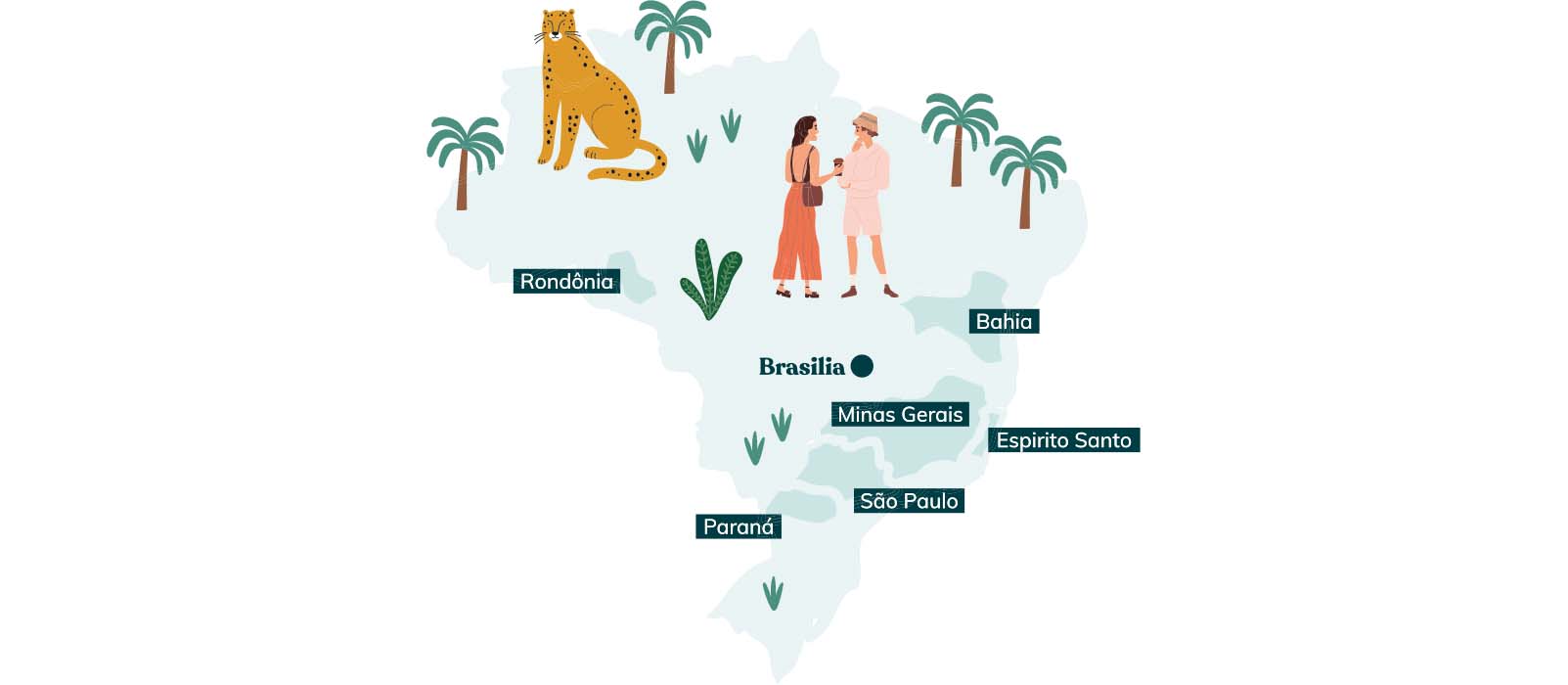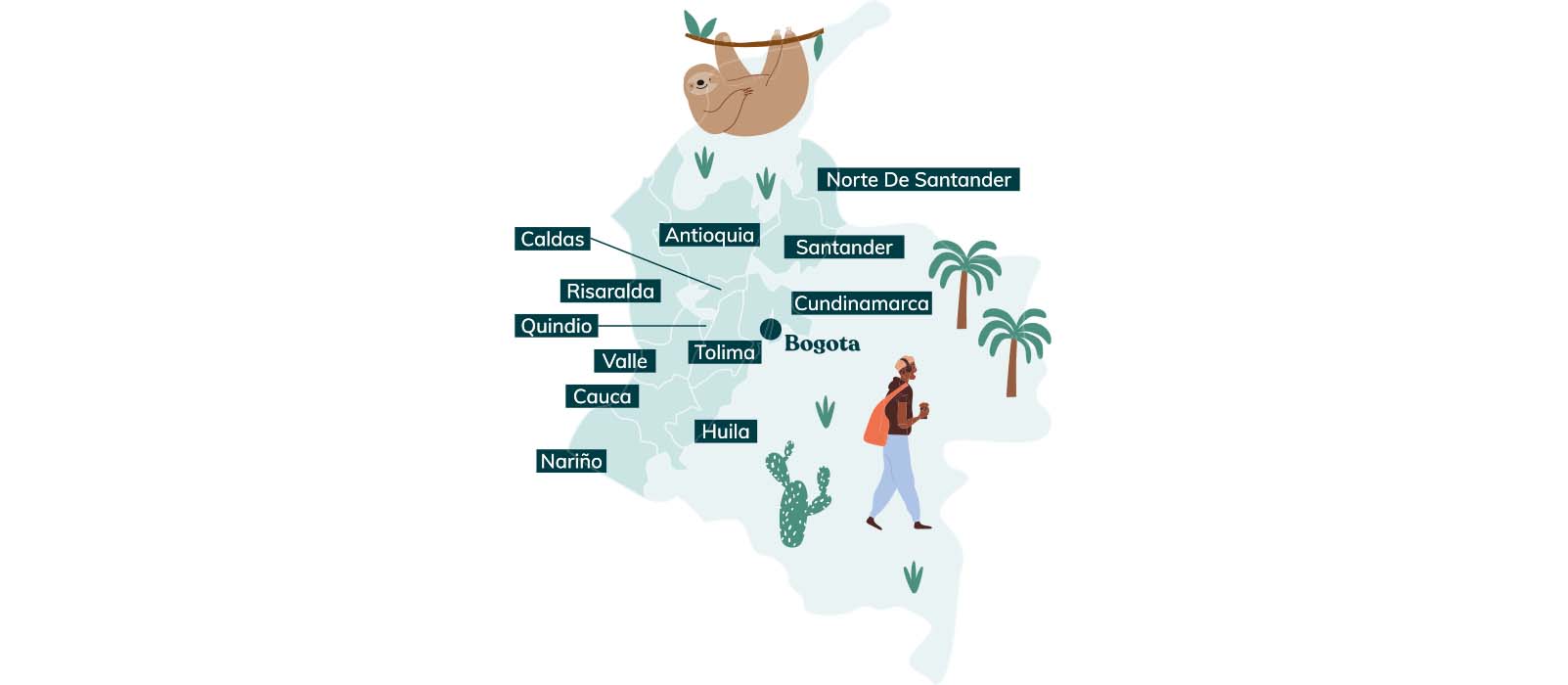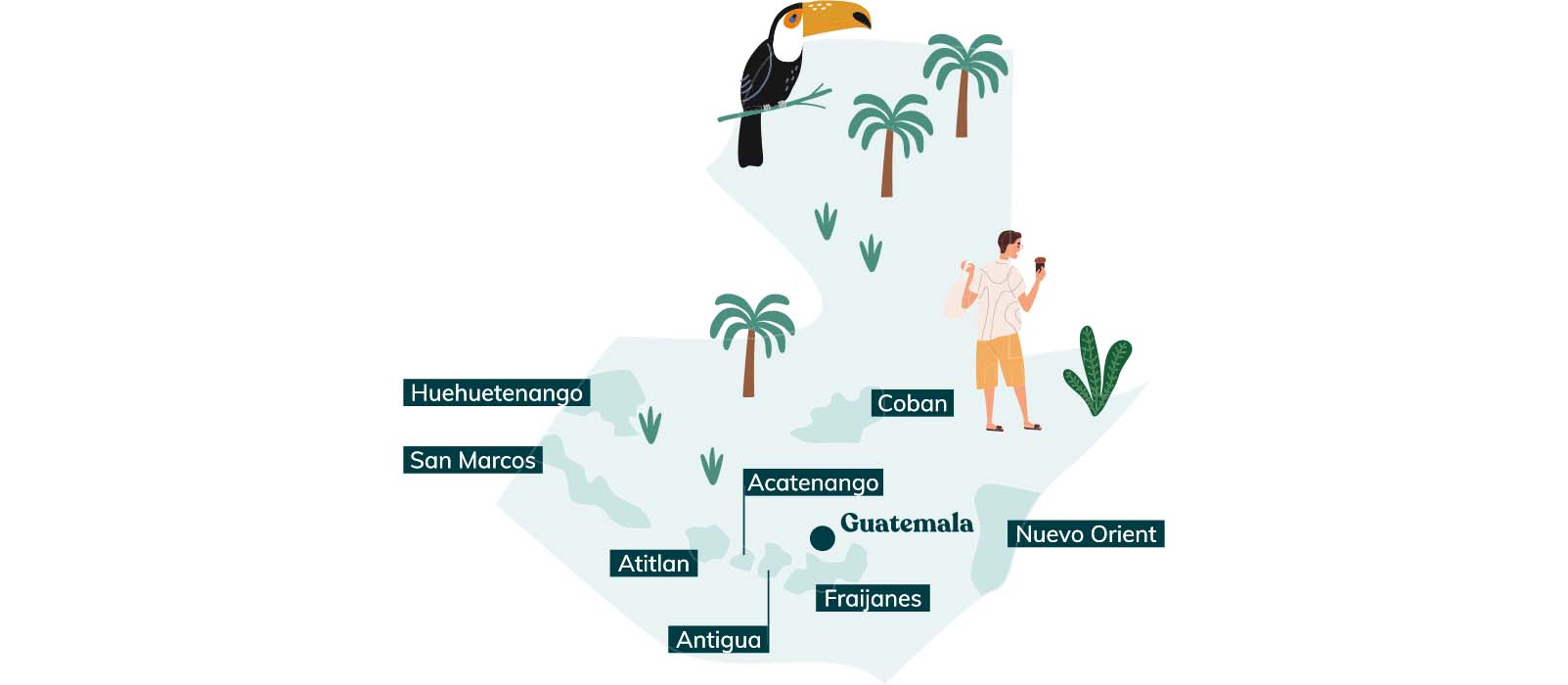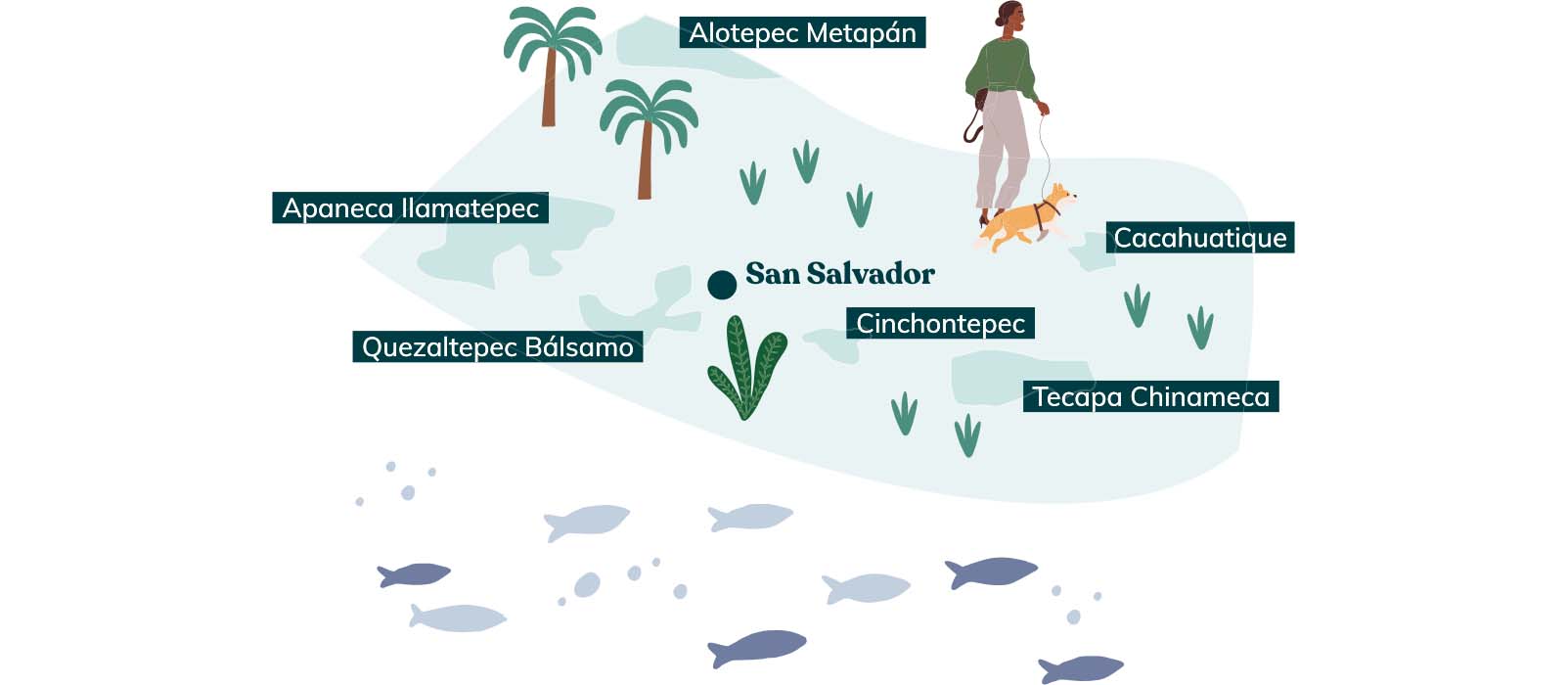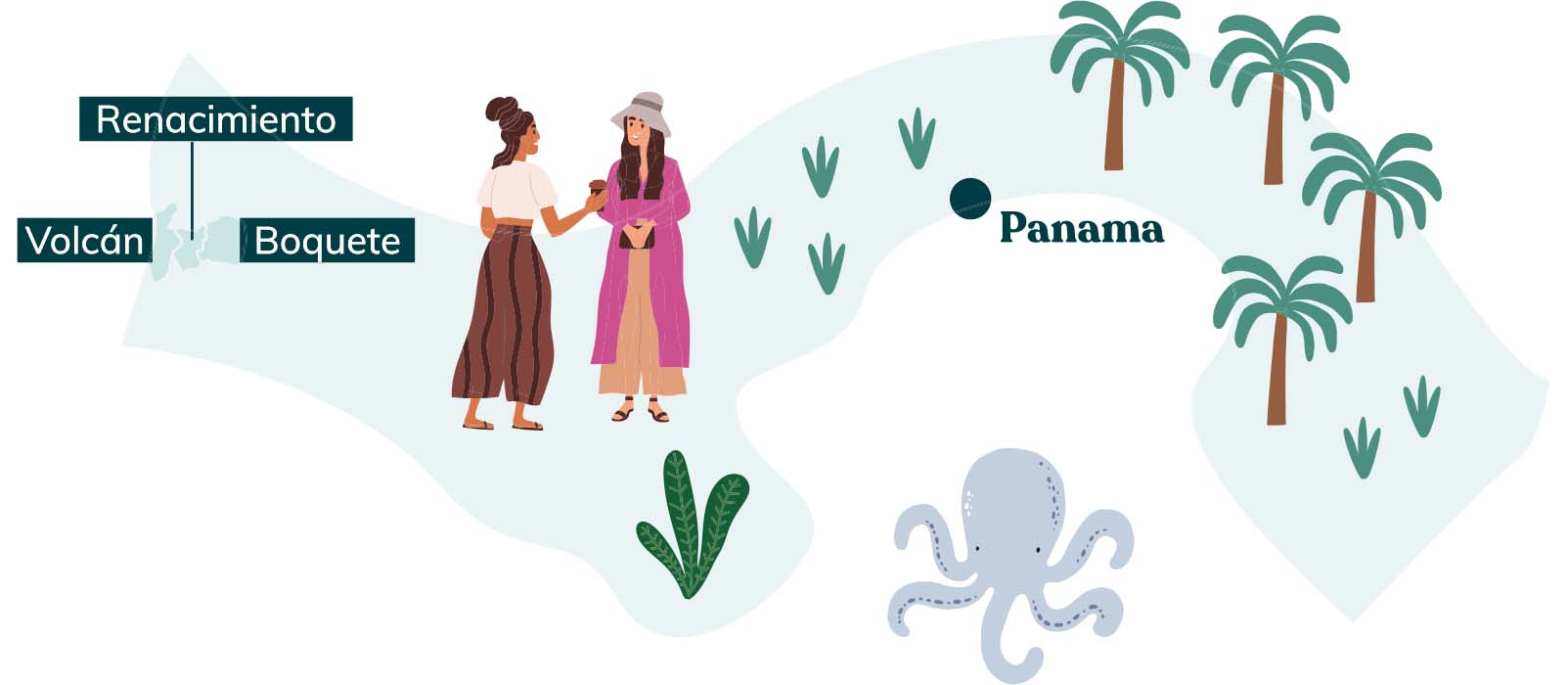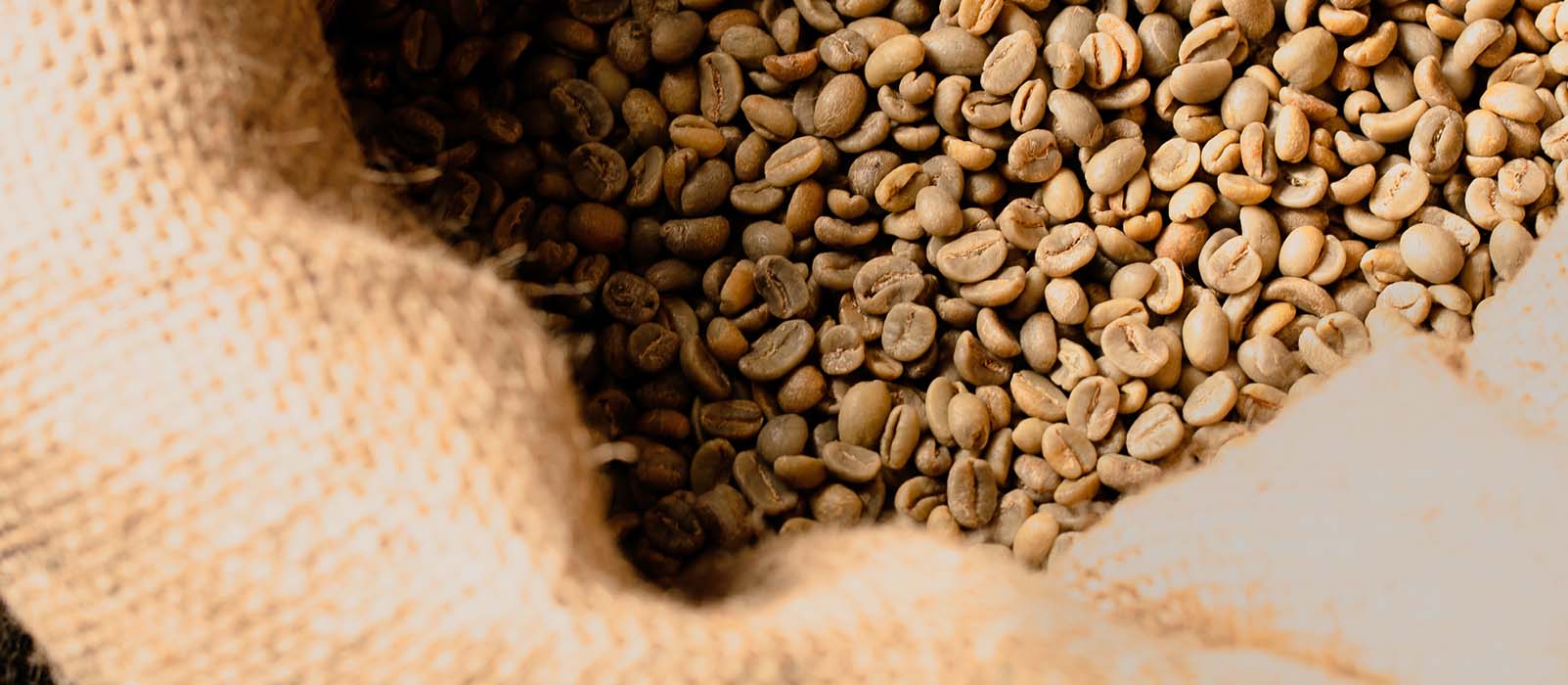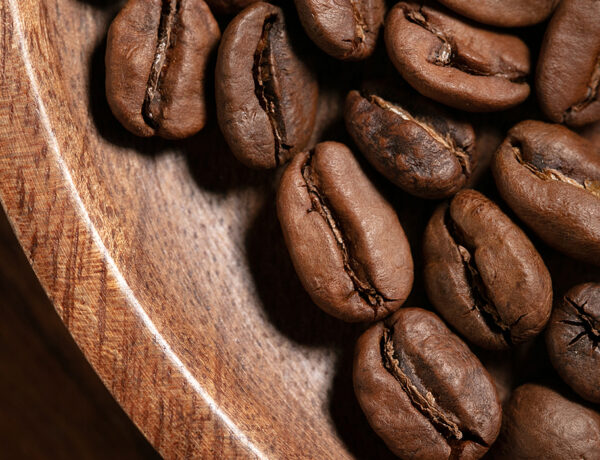
- Home
- Top Coffee-Producing Countries
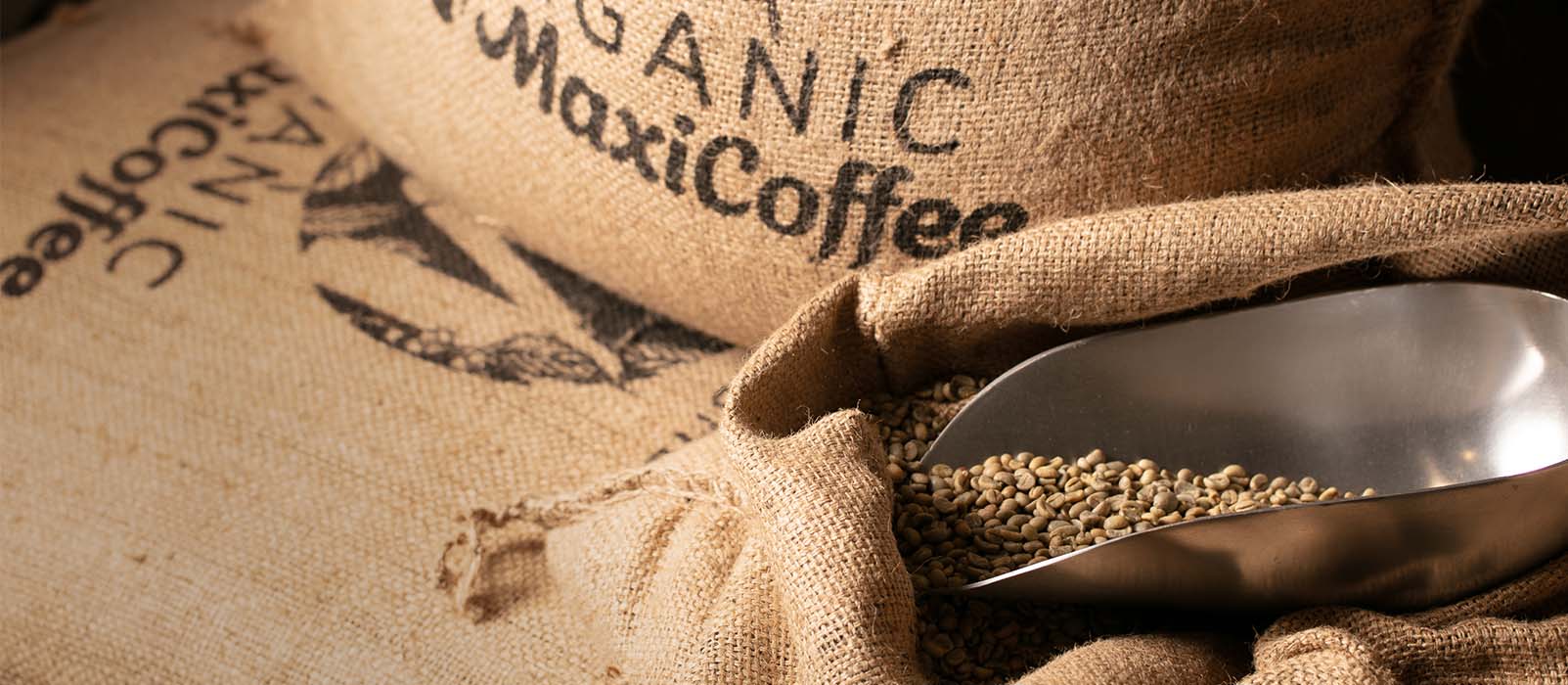
Top Coffee-Producing Countries
Written by Alice
Reading time 6 minEver wondered why coffees produced in different countries taste so different? It’s all about terroir! Just like wine, a coffee bean’s unique flavour is shaped by where it’s grown. From Colombia to Guatemala and El Salvador, let’s explore these regions where coffee retains a unique identity, offering a sensory journey without the jet lag.
What Does “Terroir” Mean?
The unique combination of the climate, soil and place of production strongly influences coffee’s notes and aromatic profile. This is what we call “terroir”.
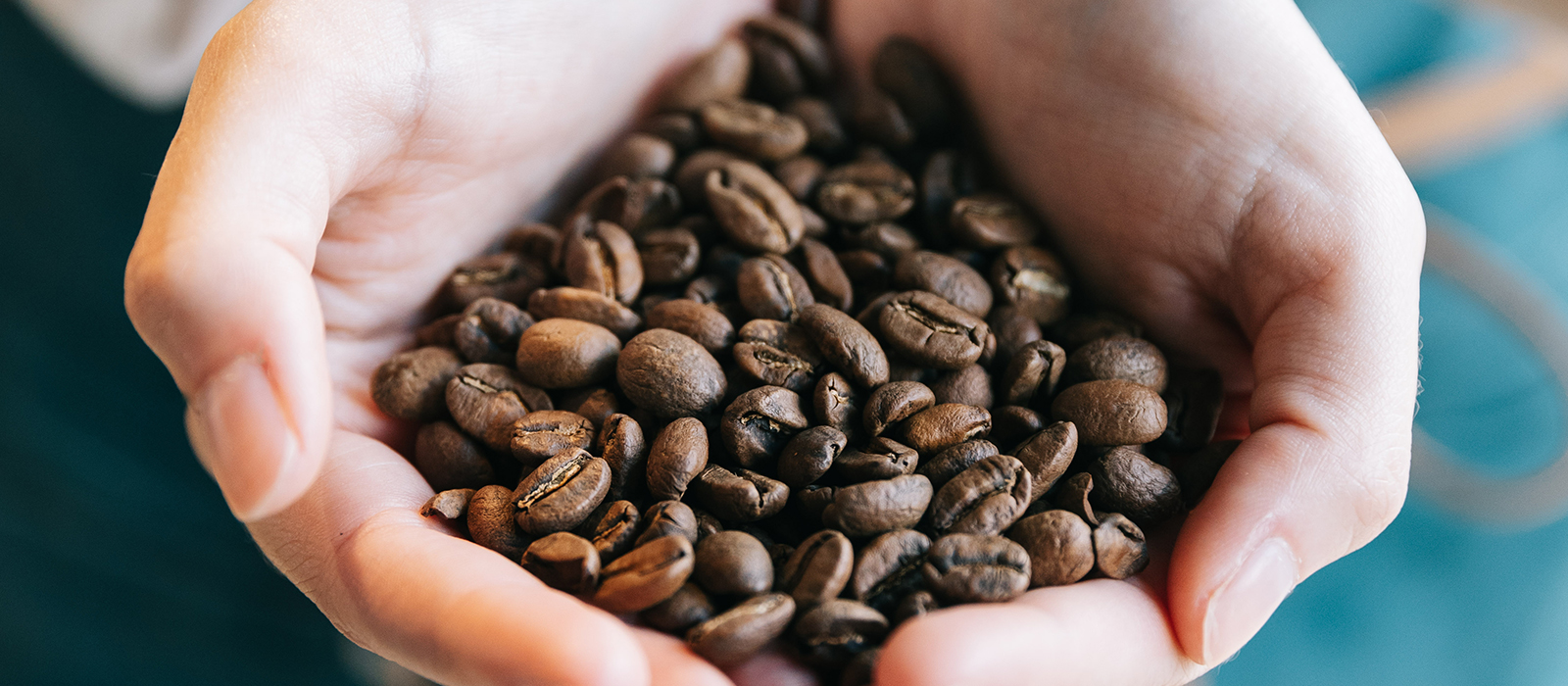
Imagine sipping a cup of Colombian roasted coffee on a misty mountaintop, or savouring a Guatemalan brew under the warm tropical sun. The environment in which coffee is grown plays a vital role in shaping its flavour. High-altitude beans, for example, tend to develop slower, resulting in a more complex and nuanced cup. The soil composition, rainfall patterns, and even the local microclimate can all contribute to the unique characteristics of a coffee.
While Coffea Arabica originated in Ethiopia, today it thrives near the equator, particularly in Central and South America. This region boasts a rich tapestry of coffee varieties and processing techniques, resulting in a vast array of flavours for coffee lovers to explore.
Which Countries Produce Coffee?
Brazil
History
Brazilian coffee wasn’t native to South America. It was introduced in the 18th century thanks to a Portuguese sergeant, Francisco de Mello Palheta, who brought seedlings from French Guiana. When Brazil’s mining industry declined, coffee cultivation emerged as a lucrative alternative, with Rio de Janeiro becoming the primary production hub.
Characteristics of Brazilian Coffee
Brazilian Arabica beans are renowned for their mild flavour profile, often showcasing nuts and chocolate notes. It is famous for its great finesse and diversity, as the taste can vary widely depending on the specific variety and terroir. While Brazil produces more Conilon (a variety of Coffea canephora, similar to Robusta), it also produces Robusta which offers stronger aromas, making it ideal for blending. Brazil stands out as a major coffee exporter.
Columbia
History
Coffee plants, originally from the French Antilles, were first introduced to Colombia between the 18th and 19th centuries by Jesuit priests. The first coffee shipment occurred in 1835. While plantations spread throughout the country, commercial production and exports remained modest until the 20th century.
The establishment of the Federación Nacional de Cafeteros de Colombia (FNC) in 1927 was a pivotal moment for the Colombian coffee industry. Today, coffee remains a cornerstone of Colombia’s economy.
Characteristics of Colombian Coffee
Colombia is one of the few countries in the world to exclusively produce 100% Arabica coffee beans. Colombian Arabica is renowned for its smooth, balanced flavour profile, often featuring notes of sweet berries and chocolate. This type of coffee is highly sought after globally.
Colombia’s unique terroir, characterized by high altitudes, fertile volcanic soils, and abundant rainfall, creates ideal growing conditions for Arabica coffee beans. This, combined with strict quality control standards enforced by the FNC, results in a consistently high-quality product. Colombian coffees are often characterized by their bright acidity, balanced body, and delicate floral or fruit notes. The washed processing method, which involves removing the fruit from the bean, is the most common in Colombia and contributes to the clean, crisp flavour profile of many Colombian coffees.
Guatemala
History
Guatemala’s coffee industry has had a tumultuous history, shaped by economic and political events. Introduced by Spanish Jesuits in the 18th century as ornamental plants, coffee growing began to flourish in the mid-19th century, primarily driven by European planters. After a period of challenges, the establishment of the Asociación Nacional del Café revitalized the industry, leading to a golden age in the late 20th century. However, production declined significantly in subsequent years.
Characteristics of Guatemalan Coffee
Guatemala’s unique terroir, coupled with traditional processing methods, results in a wide spectrum of flavours. The high-altitude regions around Antigua often produce coffees with notes of chocolate, caramel, and nuts, while beans from the Huehuetenango region tend to exhibit brighter acidity and floral aromas. The Atitlán region is known for its full-bodied coffees with hints of stone fruit. Guatemalan coffees are frequently described as having a smooth, velvety mouthfeel and a well-balanced flavour profile.
El Salvador
History
Coffee plants, originally from the Caribbean, were introduced to El Salvador around 1740. Initially cultivated and consumed locally, coffee exports to Europe began in earnest a century later, in 1855. With strong government support, the coffee industry flourished.
It wasn’t until the mid-20th century that coffee production truly took off. A stable economy and advancements in coffee processing techniques fueled the growth of the Salvadoran coffee industry. The introduction of new varieties of coffee, such as Bourbon, further enhanced the quality and diversity of Salvadoran coffee.
Characteristics of Salvadoran Coffee
Salvadoran Arabica beans are celebrated for their diverse flavour profiles and unique character, often offering a delightful balance of sweetness and acidity. Bourbon varieties dominate production, accounting for 80% of the crop. The country has firmly established itself as a producer of exceptional specialty coffees.
Le Panama
History
The first coffee plants arrived in Portobelo in 1742, brought by ship from the French Antilles. However, the region proved unsuitable for coffee cultivation, and the plants were soon relocated.
In 1996, Panama was hit by a severe coffee crisis. The country responded by shifting its focus to specialty coffee. Today, Panama’s reputation as a premier coffee-producing nation is based not on quantity but on the exceptional quality of its beans.
Characteristics of Panamanian Coffee: Geisha Coffee
While Geisha coffee is cultivated in several Latin America countries, including Costa Rica, Brazil, and Colombia, Panama’s Geisha stands out due to its unique growing conditions. Grown in the mountainous regions of Chiriquí at altitudes between 1,670 and 1,950 meters, Geisha beans benefit from the acidic soil enriched by volcanic ash from the Barú volcano.
This unique terroir contributes to the coffee’s distinctive flavour profile, characterised by its complexity, elegance, and a wide range of aromatic notes, including floral (jasmine, orchid), citrus, chocolate, and fruit (peach, pear, orange). It’s important to note that the specific flavour profile of Geisha coffee can vary depending on the processing method used.
International Coffee Day 2024
When we talk about coffee-producing countries, we’re really talking about the amazing farmers, their coffee farms, and the unique flavours of each region.
That’s what International Coffee Day is all about – celebrating everyone involved in the coffee journey, from bean to cup. It’s a day to support fair trade and enjoy a great cup of coffee.
This year, let’s celebrate on October 1st, 2024!
International Coffee Day at MaxiCoffee
At MaxiCoffee, we’re so excited about coffee that we’re celebrating all month long! Join us as we explore the incredible diversity and quality of coffee from around the world.
Want to learn more? Check out our other articles, like our list of the best coffee beans of the year!
Discover our other articles
